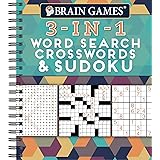Revisiting the Magic: A Deep Dive into the Best Nintendo 3DS Games
It is a remarkable fact that the Nintendo 3DS, a console cherished by millions, first graced the gaming world in 2011. This means, as of the original discussion, a full nine years had passed since its initial release. Although the advent of the Nintendo Switch and Switch Lite eventually curtailed the development of new titles, the legacy of this groundbreaking handheld device endures. Its unique blend of portable gaming, often featuring stereoscopic 3D, and an expansive library of games firmly solidified its place in gaming history. The system itself underwent numerous iterations, including the 3DS XL, 2DS, New Nintendo 3DS, New Nintendo 3DS XL, and New Nintendo 2DS XL, each demonstrating Nintendo’s commitment to enhancing the handheld experience. Below, we delve deeper into some of the most celebrated titles that defined the console, expanding on the selections presented in the video above, to truly appreciate what made these Nintendo 3DS games exceptional.
Timeless Platforming Excellence on Nintendo 3DS
Donkey Kong Country Returns 3D: A Masterclass in Side-Scrolling
For enthusiasts of classic 2D side-scrolling platformers, the Nintendo 3DS version of Donkey Kong Country Returns stands as a definitive highlight. While originally released on the Wii, the 3DS remake is often considered by many to be a superior experience, particularly due to significant control enhancements. The original Wii version, though critically acclaimed, sometimes received feedback regarding its reliance on motion controls for core actions like rolling and attacking. In contrast, the 3DS iteration wisely introduced the option to perform these actions with a simple button press, specifically the Y button, thereby allowing for a more precise and less fatiguing gameplay experience.
Furthermore, the graphical transition to the less powerful 3DS hardware was handled with impressive skill, ensuring the vibrant, intricate levels maintained their visual appeal. This version also improved accessibility for players, offering additional hearts and items to assist through what is known to be a challenging series. The game is celebrated for its diverse level mechanics, imaginative environments, and enduring appeal. Consequently, Donkey Kong Country Returns 3D is often cited as an essential title for anyone seeking a robust and enjoyable platforming adventure on their Nintendo 3DS.
New Super Mario Bros. 2: A Coin Collector’s Dream
While some argue about its standing within the broader *New Super Mario Bros.* series, New Super Mario Bros. 2 on the Nintendo 3DS presents a uniquely focused and undeniably solid platforming experience. This game’s core mechanic revolves around an ambitious objective: collecting one million coins. This goal fundamentally transforms how levels are approached, encouraging players to seek out every hidden coin block, enemy, and power-up. The introduction of the “Gold Flower,” which allows Mario to turn blocks and enemies into coins with a powerful blast, further emphasizes this theme, creating a continuous feedback loop of collection and reward.
The game features eight distinct worlds in its story mode, replete with classic Mario elements like the Super Leaf from Super Mario Bros. 3, offering a familiar yet fresh experience. Beyond the main campaign, downloadable level packs were released, specifically designed to facilitate faster coin collection, with some packs notably increasing the difficulty, providing an extra challenge for seasoned players. Moreover, the entire game supports local co-op, allowing two players, one as Mario and the other as Luigi, to navigate the stages together, which enhances replayability and social engagement. This focus on mass coin collection, while unconventional, delivers a surprisingly addictive and fun experience on the 3DS.
Super Mario 3D Land: Bridging Dimensions
Widely regarded as a standout title for the console, Super Mario 3D Land masterfully blends the accessibility and level design principles of 2D Mario games with the immersive freedom of 3D environments. This innovative approach was particularly well-suited for a handheld device, providing bite-sized, engaging stages that could be enjoyed in shorter bursts. Instead of vast open worlds or star collecting, players progress by clearing distinct levels, locating hidden Star Coins, and reaching the iconic flagpole. This structure was so successful that it influenced future console releases, notably receiving a spiritual successor on the Wii U.
The game is celebrated for its abundant content, initially offering eight unique worlds to explore. Upon completion, an additional eight “Special Worlds” are unlocked, effectively doubling the game’s length and providing a substantial amount of bonus gameplay. While not the most challenging Mario title, its clever level design, incorporation of power-ups like the Tanooki Suit, and consistent enjoyment factor make it an exceptional entry in the franchise. The 3DS’s stereoscopic 3D feature was also utilized effectively, adding depth to platforming challenges and enhancing the overall visual experience. Ultimately, Super Mario 3D Land is a testament to the console’s potential for delivering both familiar and innovative gameplay.
Engaging RPGs and Strategic Battles
Fire Emblem Awakening: A Gateway to Strategy RPGs
For many players, Fire Emblem Awakening served as a pivotal entry point into the venerable strategy RPG series. Released on the Nintendo 3DS, this game is frequently credited with revitalizing the franchise and significantly broadening its appeal to a new generation of players. While the deep and intricate storylines are a hallmark of the *Fire Emblem* series, Awakening was praised for making its strategic gameplay mechanics more accessible without sacrificing depth. Players command an army of unique characters, moving them across a grid-based battlefield in turn-based combat, with the primary objective being the completion of mission goals while minimizing casualties.
A defining characteristic of the *Fire Emblem* series is its “permadeath” system, where characters who fall in battle are permanently removed from the game. However, Awakening introduced a “Casual Mode” which allowed fallen units to return after each mission, catering to new players or those who preferred to focus on the story and strategy without the intense pressure of permanent loss. This thoughtful inclusion significantly reduced the barrier to entry, fostering a wider player base. Consequently, Fire Emblem Awakening is recognized for its role in expanding the series’ popularity and demonstrating the 3DS’s capability to host complex, engaging strategy titles.
Iconic Adventures and Innovative Gameplay
The Legend of Zelda: Ocarina of Time 3D: A Remastered Masterpiece
The Nintendo 3DS launch was strategically bolstered by the release of several remakes designed to showcase the console’s stereoscopic 3D capabilities, and among these, The Legend of Zelda: Ocarina of Time 3D emerged as a system seller. This title, a faithful yet significantly enhanced recreation of the Nintendo 64 classic, was an irresistible draw for long-time fans and new players alike. The original Ocarina of Time is universally hailed as one of the greatest video games ever made, and its 3DS iteration thoughtfully preserved its core genius while introducing meaningful improvements.
Key enhancements included vastly superior graphics and smoother animations, which breathed new life into Hyrule and its inhabitants. Dungeon designs were also subtly improved, enhancing the puzzle-solving experience. Furthermore, the 3DS version came packaged with the “Master Quest” version of the game, featuring more challenging dungeons and mirrored layouts, thereby offering substantial replay value for those seeking a greater test of skill. The ability to play this legendary adventure on the go, complete with modern refinements, solidified Ocarina of Time 3D‘s status as a quintessential Nintendo 3DS game, demonstrating the power of thoughtful remasters.
The Legend of Zelda: A Link Between Worlds: A New Spin on a Classic Formula
Beyond remakes, the Nintendo 3DS also received an original entry in the esteemed *Zelda* series: The Legend of Zelda: A Link Between Worlds. This game functions as a spiritual successor to the beloved Super Nintendo title, *A Link to the Past*, sharing a remarkably similar overworld and artistic style. However, *A Link Between Worlds* boldly deviates from the established *Zelda* formula in several innovative ways. Perhaps most notably, it introduces a system where key dungeon items are rented from Ravio’s shop, rather than found within dungeons. This allows players unprecedented freedom to tackle dungeons in almost any order, provided they possess the necessary rented item. The catch, however, is that rented items are lost upon Link’s defeat, encouraging careful play.
The dungeons themselves are lauded for their clever design and effective utilization of the 3DS’s stereoscopic 3D, creating puzzles that leverage verticality and depth. A brand-new mechanic allows Link to transform into a 2D painting and traverse along walls, opening up new avenues for exploration, puzzle-solving, and accessing the game’s parallel dimension, Lorule (a playful inversion of Hyrule). This mechanic is seamlessly integrated into both combat and environmental navigation. A Link Between Worlds is celebrated for honoring its heritage while fearlessly innovating, making it a fresh and compelling experience for any Nintendo 3DS owner.
Action-Packed Thrills and Competitive Fun
Super Smash Bros. for Nintendo 3DS: Brawling on the Go
The concept of taking the frenetic, multiplayer brawling of Super Smash Bros. to a handheld console was a revolutionary idea, and Super Smash Bros. for Nintendo 3DS delivered on that promise with resounding success. This title marked the series’ debut on a portable system, and it was revealed alongside its Wii U counterpart, with the exciting announcement that both versions would share the same extensive roster of characters. This commitment meant that the 3DS version was not a scaled-back experience but a full-fledged *Smash Bros.* game, boasting a plethora of stages and fighters.
A unique feature exclusive to the 3DS version was “Smash Run,” a single-player mode where players navigated large environments, collecting power-ups and defeating enemies before engaging in a final battle. This mode provided a distinct flavor to the *Smash Bros.* formula. Beyond single-player content, the game offered robust local and online multiplayer options, allowing players to compete against friends or opponents worldwide in “For Fun” or “For Glory” matches. Even downloadable content (DLC) characters were made available, further cementing its status as a complete and epic entry in the series for the Nintendo 3DS.
Kid Icarus: Uprising: An Unconventional Gem
Emerging from a franchise known for its sporadic releases, Kid Icarus: Uprising on the Nintendo 3DS was a powerful return for Pit, meticulously crafted by Masahiro Sakurai, the visionary behind *Super Smash Bros.* This action-packed title is distinctly divided into two core gameplay segments. The first involves on-rails shooting sequences, where players utilize the Circle Pad to maneuver Pit while aiming with the touch screen to combat swarms of enemies. Following these aerial segments, gameplay transitions to ground-based exploration and combat, offering a different pace and challenge.
The control scheme, which involves using the Circle Pad for movement and the touch screen for aiming, was famously difficult for some players to master and could lead to hand cramps during extended play sessions. Acknowledging this, the game was packaged with a unique plastic stand designed to facilitate more comfortable play. Despite this initial hurdle, once players adapted, they were rewarded with one of Nintendo’s most inventive and entertaining experiences. The game is celebrated for its witty dialogue, creative bosses, and diverse enemy encounters, establishing Kid Icarus: Uprising as a must-play title for the Nintendo 3DS, well worth the dedication required to master its unique mechanics.
Luigi’s Mansion: Dark Moon: A Handheld Haunt
Building upon the foundations of its predecessor, Luigi’s Mansion: Dark Moon for the Nintendo 3DS intelligently adapted the ghost-busting formula for a portable platform. Unlike the original game’s singular, sprawling mansion, *Dark Moon* segmented the adventure across multiple distinct mansions, each further divided into mission-based objectives. This design choice proved highly effective for handheld play, allowing players to complete meaningful progress in sessions as short as 15 minutes, making it ideal for gaming on the go.
Despite its segmented structure, the game introduced a greater variety of interactions with the environment. Luigi’s trusty Poltergust 5000 gained new functionalities, allowing for more intricate puzzle-solving and object manipulation, such as carrying items or even hilariously moving terrified Toads. The game’s boss battles are notably diverse and creatively designed, offering unique challenges. Furthermore, Luigi’s Mansion: Dark Moon features a cooperative multiplayer mode where up to four Luigis can team up to tackle ghost-filled challenges, significantly extending the game’s replayability and social appeal. For fans of the series, especially those who enjoyed Luigi’s Mansion 3, *Dark Moon* is regarded as an excellent and highly enjoyable experience on the Nintendo 3DS.
Mario Kart 7: Racing with Innovation
No discussion of essential Nintendo 3DS games is complete without acknowledging Mario Kart 7, a title that introduced several groundbreaking mechanics to the beloved racing series. This installment was the first in the *Mario Kart* lineage to feature a number in its title, a subtle but notable shift. More significantly, it revolutionized kart customization, allowing players to select their chassis, wheels, and gliders, which influenced handling, speed, and acceleration. The inclusion of gliders was directly tied to another major innovation: the ability to soar through the air after launching from ramps, adding a new vertical dimension to races.
Furthermore, Mario Kart 7 was the first game in the series to allow players to race underwater, creating entirely new track designs and strategic opportunities. These new mechanics led to the creation of 16 brilliant new tracks, each thoughtfully designed to incorporate aerial and aquatic segments. The game also featured 16 retro tracks, lovingly remastered and enhanced, showcasing classic courses with updated visuals and the new gameplay mechanics. While the character roster received some mixed feedback, with inclusions like Queen Bee and Wiggler, but notable absences such as Waluigi, the core racing experience remained as compelling as ever. The robust online multiplayer further ensured Mario Kart 7‘s enduring popularity, making it a perennial favorite for engaging gaming sessions on the Nintendo 3DS.









